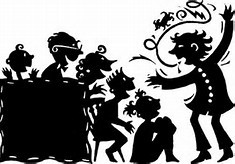
Last week, Richard wrote an excellent post about the role of storytelling in major gifts. Basically, he said it’s essential to know your organization’s story in order to create effective offers that inspired your donors to give.
I loved his idea for creating a new position at every non-profit called “The Manager of Stories.” I would love to see that role at non-profits.
There is another story we have to know to be effective at major gifts: your donor’s story. On the surface, it seems quite obvious; but it’s quite astonishing when I talk to major gift officers to find out how very little they know about their donors’ stories.
As you know, we write a ton about how you need to know your donor’s passions and interests so you can match them up with your good programs and projects. But beyond knowing that information, do you know why your donors have those passions and interests? And if you do know why, are you using that knowledge to craft an offer your donor can’t resist?
Understanding the why is really about “getting to the story” of your donor. But this seems to elude MGOs. When we work with MGOs to create a strategic plan, we always have a section of the plan called “passions and interests.” (Reviewing a completed strategic plan from one of the MGOs we manage is an absolute thing of beauty, by the way).
Many times I’ll start to go over the plan with an MGO and I’ll ask the MGO to tell me why one of their donor’s passions is something like helping kids with music programs. “Well, (the MGO tries to explain), they just said that’s what they like to give to.”
I’m thinking, “okay, that’s good, but do you know WHY? What happened in that donor’s life that makes this donor love to help kids with music? Did she have an experience that prompted this passion? Did she not get to have music in her life, and now she wants kids to experience what she never did? What is the story?”
See what I mean? If you know the story, I mean really, really know it, just think how much stronger the offers you create will be, and how much they’ll inspire her to give. Not only that, but imagine yourself in front of a donor, relaying back “her story” as you talk about how important she is to your organization. How powerful! What an impact you would make on the donor.
I’m sure you understand this. Think about the last time someone said something like this to you: “I remember a story you told years ago of when you did x, y and z…” Do you remember how good it felt that someone had listened to you, remembered it and then used it again in another conversation with you? Your brain and your heart are leaping because they are telling you that you matter, and that they know you!
That is how your donor will feel when you mention his story back to him. Couple that with the story of the need you will be presenting, and it will be nothing short of powerful!
In fact, when you bring together the donor’s story with the story of the problem he will solve, you’ll create a new story. That story will be one of impact and of hope… of redemption and love.
So, as Richard was so bold to create the new non-profit position “Manager of Stories,” I also wish that every database had a section called “the donor’s story.” This section of the database would be looked upon just as importantly as the donor’s giving history, the wealth indicator score, and where they are in your moves management cycle.
Perhaps you could record the donor on video, telling his story, and place it in his record. Or you could take the time to write it out just like a journalist would. Whatever you do, know that it’s just as important to know the story behind the need you are presenting to the donor as it is to know the donor’s own story.
Do you know your donor’s story?
Jeff
Search Blog Posts





0 Comments